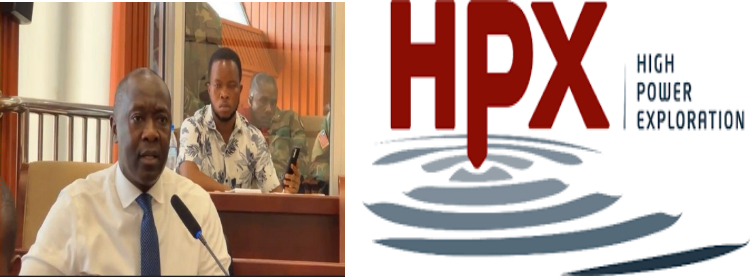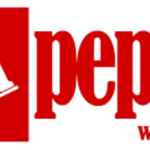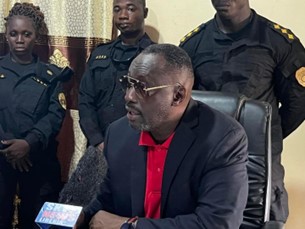“The devil is in the details” is an idiom alluding to a catch or mysterious element hidden in the details of an agreement or a plan between parties or individuals.
It is a phrase that indicates that something may seem simple or sound glamourous, as in the case of HPX’s big $5 billion investment plan in Liberia, but the details of such investment could be complicated and may end in limbo.
“As it is always said, the devil is in the details,” a key phrase that concluded Gbarpolu County Senator Amara Konneh’s commitment to dissecting High Power Exploration’s (HPX) plan to invest in Liberia.
Given HPX’s troubled business dealings in Liberia, early Monday, the former Finance Minister, now Senator of Gbarpolu County, posted on Facebook: “We welcome the HPX announcement by President Boakai’s office.”
But Amara insisted, “HPX could have opted for this option a long time ago, and there would have been no issues,” referring to what seems to have been a backdoor arrangement with the Weah administration where a questionable $30 million was paid to the Weah government on the strength of a “non-binding” framework agreement that never materialized. Senator Konneh further cautioned that Liberia, as a country, must pay attention to the details of this new investment by HPX and others to avoid any future debt burden. Senator Konneh’s caution represents the echoes of a familiar and recent experience where in the earliest period of George Weah’s administration Liberians celebrated the signing of the Eton Financing and EBOMAF SA Loan Agreements for the construction and pavements of 830 kilometers road network in Liberia, which later turned out to be white elephant agreements that never materialized.
Konneh averred, “We caution that we pay attention to any potential debt implications that could affect the balance sheet of the country, given the $37 million framework agreement that HPX signed with the immediate past regime.”
He further added, “Hopefully, this deal is purely financed by private actors without the sovereign issuing any form of “guarantee” whatsoever.” Konneh, a former Minister for Finance and Former Senior World Bank Advisor for Africa, is familiar with these kinds of foreign direct investment HPX and others are promising Liberia. He vowed, “We are committed to giving this deal the highest scrutiny in the Legislature consistent with our laws.” Senator Konneh said that concerning the examination of the financial aspects of HPX’s investment plan, he intends to probe into the socio-economic benefits for citizens.
In other words, what plans exist for people displaced by the railroad? What plans are there for economic activities along the corridor?
“What are the plans for local businesses to access the rail line? Does it include investing in the Port of Buchanan to increase its berthing capacity?” he asked. Given the limited roles Liberians play in the administration of concession agreements, the senator promised he would insist on knowing “what roles Liberians will play in the construction and management (short and long-term) of the Liberty Corridor”. These questions, as rhetorical as they may seem, are valid to shaping the future of new investments in Liberia, and to ensure that the people of Liberia draw the most benefits.
He also wondered, “By this announcement, has HPX now gravitated from their quest to utilizing existing railway to constructing an entirely new rail and port?”
The senator said he anticipates a frank and detailed review of the agreement to ensure transparency and public disclosure of the deal – from the financing to economic analysis and impact on the lives of Liberians.
In recent years, HPX has been bent on using the Liberia government – ArcelorMittal restored railway to transport ore from its Guinean mines to the port of Buchanan for shipment to Europe and other parts of the world.
However, HPX and its collaborating companies met President Boakai in a private meeting last week and, in a surprising twist of intentions, announced later that it was ready to invest $5 billion in Liberia to establish and build a new rail corridor.
HPX signed a Letter of Intent with the Government of Liberia (GOL) and Guma Africa Group to develop what Robert Friedland intentioned as “The Liberty Corridor”. HPX said its “Liberty Corridor” will contain a new heavy-duty railroad connecting the Nimba district of Guinea to a new Liberian deep-water port that will be “a leading African example of multi-user, independently operated, open access infrastructure that will support the economic opening of the West African region to World markets.”
An estimated investment of US$3 to $5 billion was announced by HPX and its collaborator GUMA to enable sustainable mineral development and downstream value addition to regional economies.
HPX and Guma Africa Group Ltd, led by global Pan-African entrepreneur Robert Gumede of South Africa, said they will enter into negotiations with the Government of Liberia (GOL) to agree on the framework granting exclusive rights to develop, finance, and grant operating rights to the Liberty Corridor.
The three parties, a statement said, will form a tripartite Liberty Corridor Project Steering Committee to liaise with all stakeholders and potential international financiers. However, what Robert Friedland did not reveal are the sources of financing for the project and time frame as to when the project would commence.
HPX’s abrupt shift of priority from the use of the existing rail and port facilities to the building of a totally new rail could ring the credibility of its professed investment plan into question.
The danger of a major investor lacking a clear-cut plan for their investment lies in the increased likelihood of poor decision-making and resource allocation.
This is true because, without a clearly defined strategy, HPX may lead to haphazard investments across the mining sector or projects, resulting in a lack of coherence and synergy.
It breeds risk exposure as without a strategic direction, investors may fail to adequately assess and manage risks associated with their investments, potentially leading to significant financial losses and missed opportunities, operational inefficiencies, and long-term sustainability concerns.
With this inconsistency in strategic vision and plan, people are already thinking that HPX, its collaborators, and subsidiaries could struggle to achieve long-term sustainability, as they may not be adequately prepared to adapt to changing market conditions or seize emerging opportunities.
In essence, HPX’s shift from one priority to another shows a lack of a clear investment plan, and this highlights the challenges that could be stumbling blocks to achieving its overall objectives.






